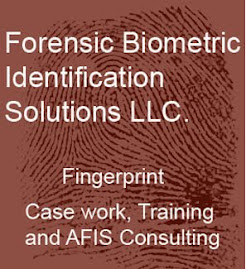This is a case where the agency should have re-evaluated procedure. Every latent fingerprint examiner realizes there will be cases where the fingerprint clarity of the latent fingerprint may result the 2nd. examiner being unable to individualize the latent fingerprint comparison. There are a number of reasons why the latent fingerprint examiners analyst might not be able to agree on individualization. The most common reasons are:
One examiner just may have more experience.
One of the examiners may under perform.
One examiner may be pushing the envelope.
Experience, as I’ve indicated in prior blogs the experience gained by comparing thousands of fingerprints is critical to the making of a competent latent fingerprint examiner. Many labs’ concentrate on the collection/processing and the comparison is more an after thought, a good examiner needs to work at his skills daily for a number of hours. This might seem an extreme example but Tiger Woods continually practices his golf game to maintain his skill level, if he makes a mistake he will finish out of the money. A latent fingerprint examiner makes a mistake it can cost a person their freedom or possibly put someone’s life in jeopardy. Seems like we aren’t paid enough.
Underperformance, this is an agency personnel issue however by a latent fingerprint examiner not making an identification when they should it again is a public safety issue. Putting an individual back on the street that should be incarcerated endangers us all and opens an agency to $ liability. This is where an agency needs to get the examiner more training or a new position.
Pushing the envelope, the latent examiner has points of identification in agreement but because of the clarity of the image(s), a more experienced examiner is unable to individualize the identification. This is where good procedures come into play. The procedure should insure that a qualified 3 rd. latent print examiner (preferably a supervisor) analyzes the fingerprint impressions. This also can be a personnel issue and training or a new position again might be required.
The defense attorneys are correct and they should be aware of the diverging conclusion.
As Pat Wertheim said in the article "All forensic science is coming under a lot more scrutiny as to transparency in note-taking and reporting," Wertheim said last week. "You just don't sweep things under the carpet."
All agencies whether local or state need to invest in training and procedures to insure quality fingerprint identification services. The defense attorney needs to insure that the state or local agency meets their obligation.
Bob McAuley
Dir. Operations/Training
Forensic Biometric Identification Solutions LLC.






No comments:
Post a Comment